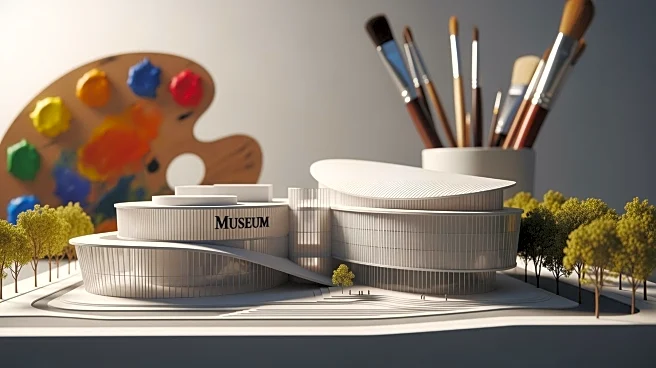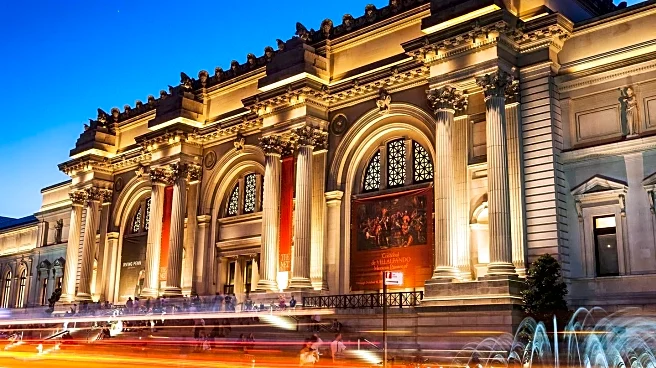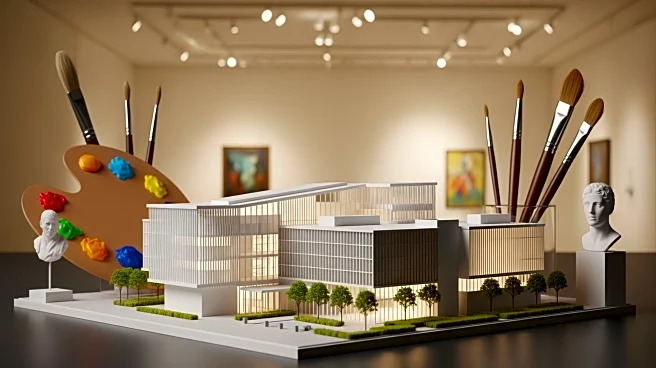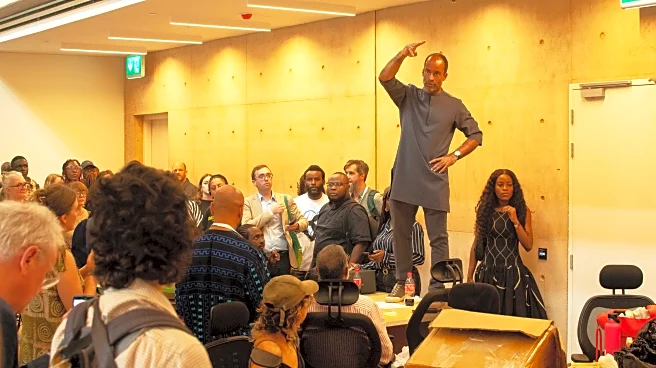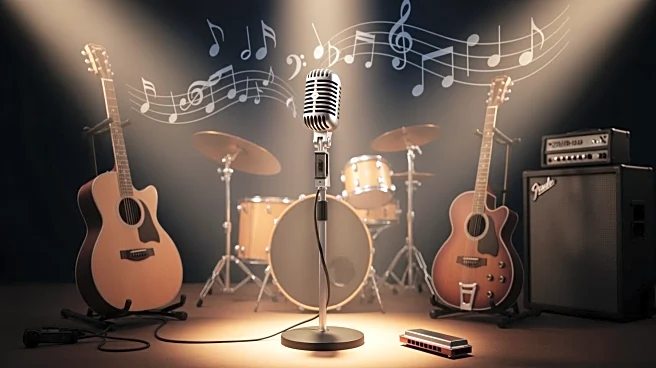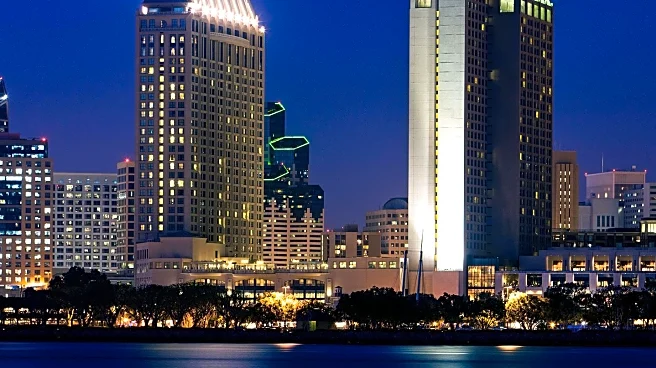What's Happening?
The Studio Museum in Harlem is set to reopen after a seven-year renovation, unveiling its new building on West 125th Street. The museum, which closed in 2018 for the renovation, hosted a pre-opening party
attended by artists, supporters, and alumni of its Artist-in-Residence program. The new building spans 82,000 square feet and is designed to advance the work of African and Afro-Latinx artists. The museum's director, Thelma Golden, expressed excitement about the new era for the institution, emphasizing its role in supporting the Black arts community. The renovation was funded by a gala that raised over $3.7 million.
Why It's Important?
The reopening of the Studio Museum in Harlem marks a significant moment for the arts community, particularly for African and Afro-Latinx artists. The museum has been a vital platform for these artists since its founding, and the new building enhances its capacity to support and showcase their work. This development is a testament to the importance of cultural institutions in fostering diversity and inclusion in the arts. The museum's expansion reflects broader efforts to celebrate and preserve the contributions of Black artists, providing them with a dedicated space to engage with the public and each other.
What's Next?
The Studio Museum in Harlem will officially reopen to the public on November 15, welcoming visitors to explore its new exhibitions and installations. The museum's expanded space will allow for more comprehensive programming and collaborations with artists and cultural organizations. As the museum enters this new phase, it is likely to attract increased attention and support from the arts community and patrons. The reopening may also inspire similar initiatives in other cultural institutions, highlighting the importance of investing in spaces that promote diversity and representation in the arts.
Beyond the Headlines
The renovation of the Studio Museum in Harlem underscores the significance of cultural preservation and the role of museums in shaping public discourse. By providing a platform for African and Afro-Latinx artists, the museum contributes to a broader understanding of cultural identity and history. This development also raises questions about the accessibility and sustainability of cultural institutions, prompting discussions about funding and support for the arts. As the museum reopens, it will continue to serve as a beacon for artistic innovation and community engagement.
